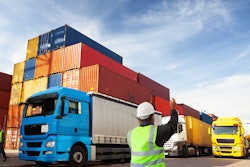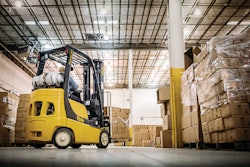
As consumer interest in eco-conscious brands continues to grow, businesses across the food industry–from producers to manufacturers to retailers–are prioritizing sustainability initiatives to maintain their competitive edge. Within the past year, food and beverage manufacturers have all outlined goals naming Scope 3 emissions as part of broader commitments to reduce overall carbon emissions.
Scope 3 category emissions, which comprise nearly 87% of a food company’s greenhouse gas emissions, have gradually moved to the forefront of discussions on improving companies’ sustainability impact. These discussions have been catalyzed by a recent proposal initiated by the U.S. Securities and Exchange Commission that would require publicly traded companies to report their Scope 3 emissions. Yet, capturing Scope 3 emissions remains an arduous and intimidating task for food manufacturers; since these emissions occur outside of a company's direct control, they can be significantly more challenging to measure and ultimately reduce. However, for those looking to stay ahead of future regulations and lead in environmental, social and governance (ESG), understanding how to measure scope 3 emissions accurately and having the right tools to develop a comprehensive reduction strategy are going to be imperative.
Why an emphasis on Scope 3?
In order to successfully reduce Scope 3 emissions, companies must understand how to track and measure them against all other emissions throughout their company value chain. According to the EPA, Scope 1 emissions encompass direct emissions, or emissions that occur from sources that are controlled or owned by an organization. This includes, for example, stationary combustion or fuel consumption by company-operated vehicles. Meanwhile, Scope 2 emissions are indirect GHG emissions associated with the purchase of electricity, steam, heat or cooling. This leaves Scope 3 to cover the more elusive, indirect emissions that occur throughout an organization’s value chain.
The Greenhouse Gas Protocol defines 15 distinct reporting categories within Scope 3 emissions and provides guidance for calculation methods, accounting principles, reduction targets and reporting. Widespread adoption of this industry-standard guidance will help the food industry at large use a shared language when researching and reporting on emissions, and make it easier for food companies to set meaningful reduction targets.
Companies are currently only obligated to report on those categories which are relevant to their operations, and emphasis should be placed on each category proportional to its contribution to overall company emissions. In food and beverage manufacturing, Category 1 (Purchased Goods and Services) and Category 4 (Upstream Transportation and Distribution), are especially relevant, as these two categories alone account for more than an estimated 70% of a company’s total GHG emissions. In order to be scored at anything above the lowest level by CDP, the global disclosure system, a food company must report on their Category 1 emissions and all other categories are optional.
Tackling Scope 3
Scope 3 emissions categories are often challenging to gather data on and can require extensive resources to produce accurate reporting. However, tackling the scale of Scope 3 emissions can be accomplished by adopting innovative technologies to alleviate difficulties. When looking at reporting tools, it is essential for food companies to understand the carbon accounting methodologies used and to look for those that are built specifically for the food system. Platforms that aggregate crop- and location-based emission factors and do not employ short-cuts like spend-based accounting methods will ensure sustainability teams can get accurate baselines while avoiding endless supplier surveys and inaccurate global average emission factors. This approach is essential for companies looking to not only comply with potential regulations, but also measure and manage their impact over time more accurately to achieve public carbon reduction commitments.
As pressure compounds from both consumers and regulators, food manufacturers must be prepared to look beyond the scope of their direct operations and own responsibility for emissions from their entire supply chain. Fortunately, sophisticated data tools are becoming more accessible, which will allow food companies to meet expectations and move the world closer to a more sustainable path.















